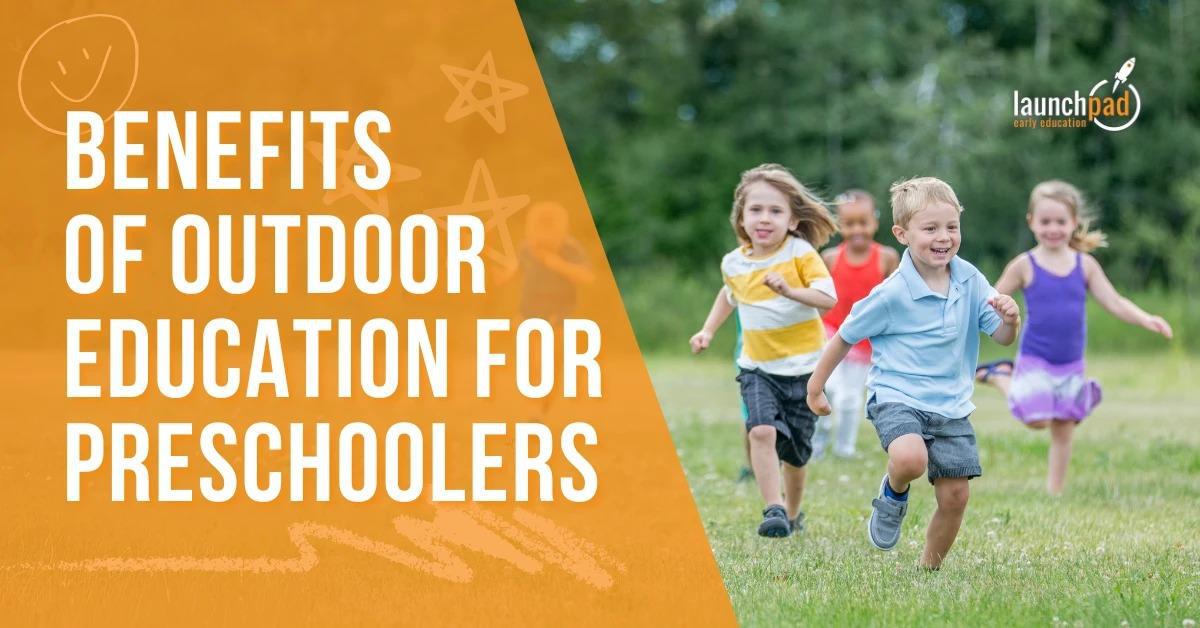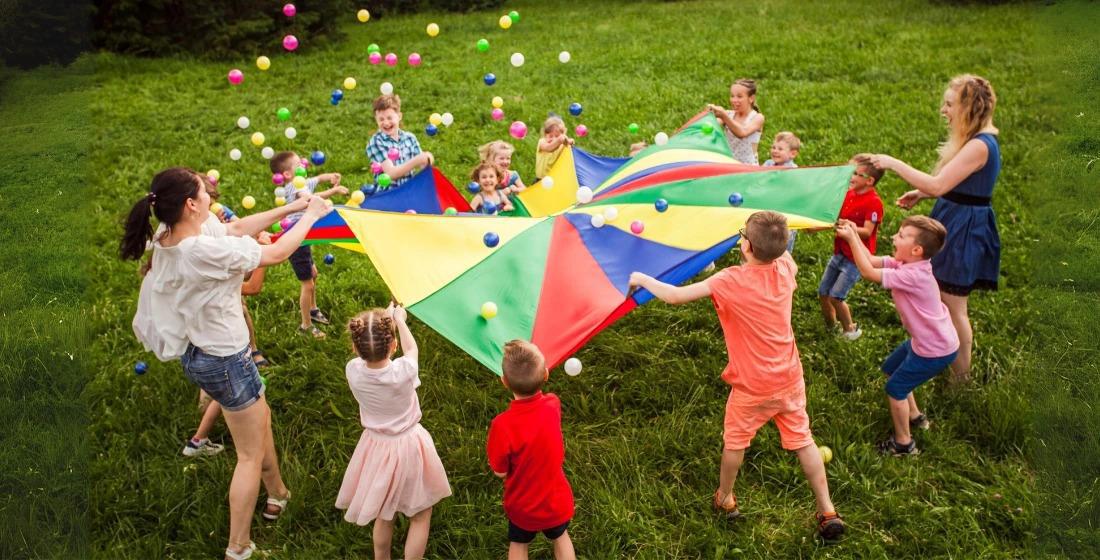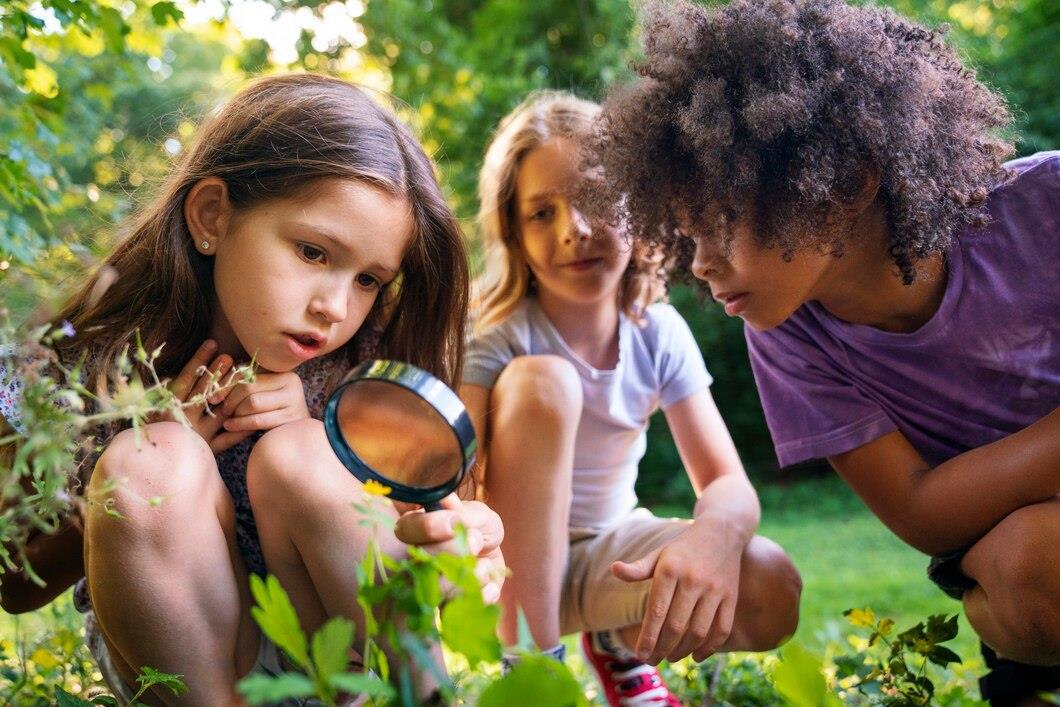In today’s fast-paced, technology-driven world, it’s easy to overlook the importance of connecting with nature. However, outdoor education for preschoolers is crucial for their overall development and well-being. From enhancing physical health to nurturing creativity and social skills, outdoor learning activities have vast and far-reaching benefits.
Why Outdoor Education for Preschoolers Matters
Outdoor education for preschoolers is not merely about playing outside; it’s about providing children with opportunities to explore, discover, and learn in a natural environment. When children engage in outdoor education for preschoolers, they develop a deeper understanding and appreciation for the world around them. They learn to observe, question, and investigate, which are essential skills for lifelong learning.
The Physical Advantages of Outdoor Education for Preschoolers
Outdoor education has numerous physical benefits for preschoolers. When children spend time outdoors, they can engage in activities that develop gross motor skills. These activities help build strong muscles and bones, improve coordination, and increase overall fitness.
Gross Motor Skill Development
Outdoor play offers many opportunities for preschoolers to develop motor skills. Running, jumping, and climbing are examples of physical activities that children can enjoy outdoors. These activities help build strength, coordination, and balance.
Outdoor engagement allows children to move freely and explore their physical abilities. This freedom of movement is important for developing gross motor skills. These skills are the foundation for more complex physical activities and sports.
Exposure to Sunlight and Vitamin D
Outdoor learning offers preschoolers the advantage of sun exposure, which is crucial for vitamin D synthesis. This vitamin plays a vital role in promoting healthy bone growth by facilitating the absorption of calcium and phosphorus from the diet. Regular outdoor activities ensure that children receive enough vitamin D, potentially preventing diseases like, rickets and osteoporosis. Additionally, vitamin D contributes to a enhanced mood, and better sleep quality.
Boosting the Immune System
Regular outdoor time can help boost the immune system, which is essential for fighting illness and disease. Studies show that children who spend more time outdoors have a lower risk of developing allergies, asthma, and other respiratory problems.
Exposure to a diverse range of microbes in the outdoor environment can strengthen the immune system. When children play outdoors, they encounter various:
- Bacteria
- Viruses
- Other microorganisms
As a result, this can build their immunity over time.
Reducing the Risk of Chronic Disease
Outdoor education for preschoolers can help reduce the risk of chronic diseases. These include obesity, diabetes, and heart disease. These conditions are becoming more common in children and are often linked to sedentary lifestyles and poor dietary habits.
Encouraging children to be physically active outdoors can help prevent these conditions from developing. Outdoor play provides opportunities for high-intensity physical activity. This can help increase:
- Metabolism
- Burn calories
- Maintain a healthy weight
Spending time in nature has also been shown to positively impact mental health. It can reduce stress and anxiety levels, which in turn can help lower the risk of chronic diseases linked to stress, such as heart disease and diabetes.
The Cognitive Advantages of Outdoor Education for Preschoolers
 Sensory Stimulation
Sensory Stimulation
Imagine a child watching leaves change color in the fall or listening to a babbling brook. These experiences might seem simple, but they’re actually helping the child develop important visual and auditory perception skills. Outdoor education is full of sensory experiences that engage a child’s senses and help wire their brain for learning.
But outdoor learning is not just about seeing and hearing, basically, it engages a child’s senses. They might feel the bark texture on a tree, smell the fragrance of a flower, or taste a freshly picked berry. These sensory experiences create new neural connections in the brain, laying the foundation for future learning.
Attention and Focus
Finally, outdoor education can help improve attention and focus in young children. In today’s world, children are often bombarded with distractions and stimuli, from screens to noisy toys. This constant stimulation can make it difficult for children to maintain attention and focus on a single task.
When children engage in outdoor learning activities, they can practice sustained attention. For example, observing a caterpillar for an extended period or working on a nature-based art project requires concentration and perseverance. Over time, these experiences can help children develop stronger attention skills that transfer to other areas of learning.
Exploring and Investigating
Kids have an innate desire to explore the world around them. When they’re outdoors, they’re free to roam, discover, and investigate to their heart’s content. Every rock, leaf, and creature is a source of fascination for them.
As they explore, children naturally start asking questions. They might point to a flower and ask, “What’s that?” or pick up a strange-looking insect and wonder, “Why does it look like that?” These questions demonstrate their curiosity and desire to learn.
Making observations comes naturally to young children. They use all their senses to gather information about their environment. They might notice the rough texture of tree bark, the sweet smell of a flower, or the sound of birds chirping.
Based on their observations, children start drawing conclusions. For instance, they might notice that all the leaves on a particular tree are the same shape and conclude that leaves from the same tree are similar. This is a basic form of inductive reasoning, which is a key component of scientific thinking.
Asking Questions
Children are naturally curious, and this curiosity often manifests in the form of questions. When they’re outside, they’re surrounded by stimuli that spark their curiosity and lead to an endless stream of questions.
For example, a child might pick up a leaf and ask, “Why is this leaf pointy?” or “Why is this leaf round?” These questions show that the child is interested in understanding the characteristics of different leaves and why they vary.
Similarly, a child might observe an insect crawling on the ground and ask, “Why is that bug moving in a zigzag pattern?” This question indicates that the child has noticed the insect’s unusual movement and wants to understand the reason behind it.
Asking questions is the first step in the scientific process. Basically, scientists begin their investigations by asking questions about the phenomena they observe. By encouraging children to ask questions, outdoor education helps foster a scientific mindset.
Making Predictions and Testing Ideas
Once children have a question, they often start thinking about possible answers. In other words, they form hypotheses or predictions. For instance, a child who wonders why leaves have different shapes might predict that the shape of a leaf helps the tree survive in its environment. Or a child who wonders about a bug’s zigzag movement might guess that the bug is trying to confuse predators.
- To test their predictions, children can engage in observation and experimentation. They might collect leaves from different trees and compare their shapes, trying to find patterns or relationships.
- However, they might watch the bug for an extended period, observing how it moves in response to different stimuli. This process of making and testing predictions is at the core of the scientific method. By engaging in this type of thinking, children are developing important scientific skills.
Hands-On, Inquiry-Based Learning
Outdoor education provides ample opportunities for hands-on, inquiry-based learning. Instead of just reading about nature in a book, children can directly interact with it. Few of them are given here:
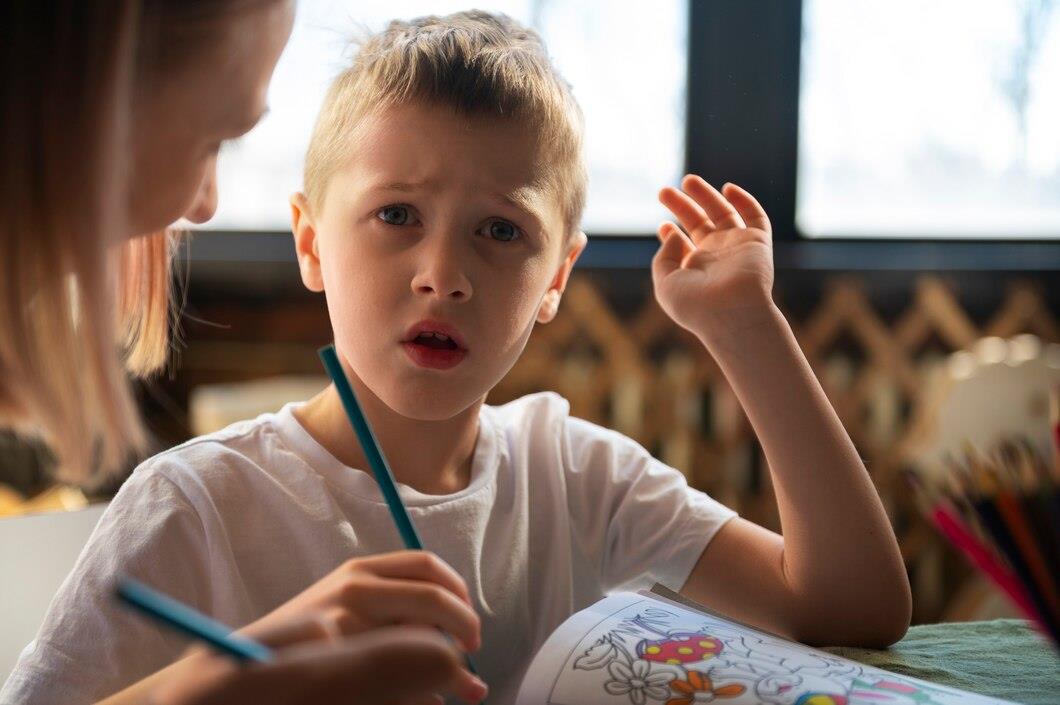 They can pick up leaves, rocks, and sticks to examine them more closely. They can dig in the dirt to look for insects or plant seeds to watch them grow. These tactile experiences make learning more engaging and memorable.
They can pick up leaves, rocks, and sticks to examine them more closely. They can dig in the dirt to look for insects or plant seeds to watch them grow. These tactile experiences make learning more engaging and memorable.
Inquiry-based learning means that children are actively involved in the learning process. Instead of passively receiving information from a teacher, they are encouraged to ask questions, make observations, and draw their own conclusions.
This type of learning has been shown to be highly effective. Children who are actively involved in the learning process are more likely to develop a deep understanding of concepts they are studying.
Thinking Skills for Life
The problem-solving and critical thinking skills that children develop through outdoor education have far-reaching benefits. Some of them are listed below:
In school, these skills are essential for success. Children who can think critically and solve problems are better equipped to tackle challenging academic content and engage in higher-level thinking.
Beyond school, these skills are valuable in any career path. Scientists need to be able to ask questions, form hypotheses, and test their ideas. Entrepreneurs need to be creative problem-solvers. Artists need to think critically about their work and the world around them.
By developing these skills early on, children are laying the foundation for lifelong learning and success. They are learning how to think, not just what to think.
Outdoor education provides a unique and powerful context for developing these skills. By engaging with the natural world, children have endless opportunities to explore, question, and discover. They can take risks, make mistakes, and learn from their experiences in a way that is not always possible in a traditional classroom setting.
Creativity and Imagination
Outdoor learning also sparks creativity and imagination in young children. In nature, there are no pre-defined rules or expectations. Children are free to explore, create, and imagine to their heart’s content.
A stick can become a magic wand, a tree stump can be a castle and a patch of grass can transform into a jungle. This type of open-ended, imaginative play is essential for cognitive development. It helps children develop symbolic thinking, language skills, and the ability to see things from different perspectives.
Moreover, nature itself is a source of inspiration and wonder. The patterns, colors, and shapes found in nature can spark a child’s imagination. They might be inspired to create art, tell stories, or come up with new ideas based on what they observe in the natural world.
The Social and Emotional Advantages of Outdoor Education for Preschoolers
Outdoor education for preschoolers also plays a vital role in social and emotional development. When children engage in outdoor learning activities, they have the opportunity to interact with their peers in a natural setting. They learn to communicate, collaborate, and problem-solve together, which helps to build strong social skills and emotional intelligence.
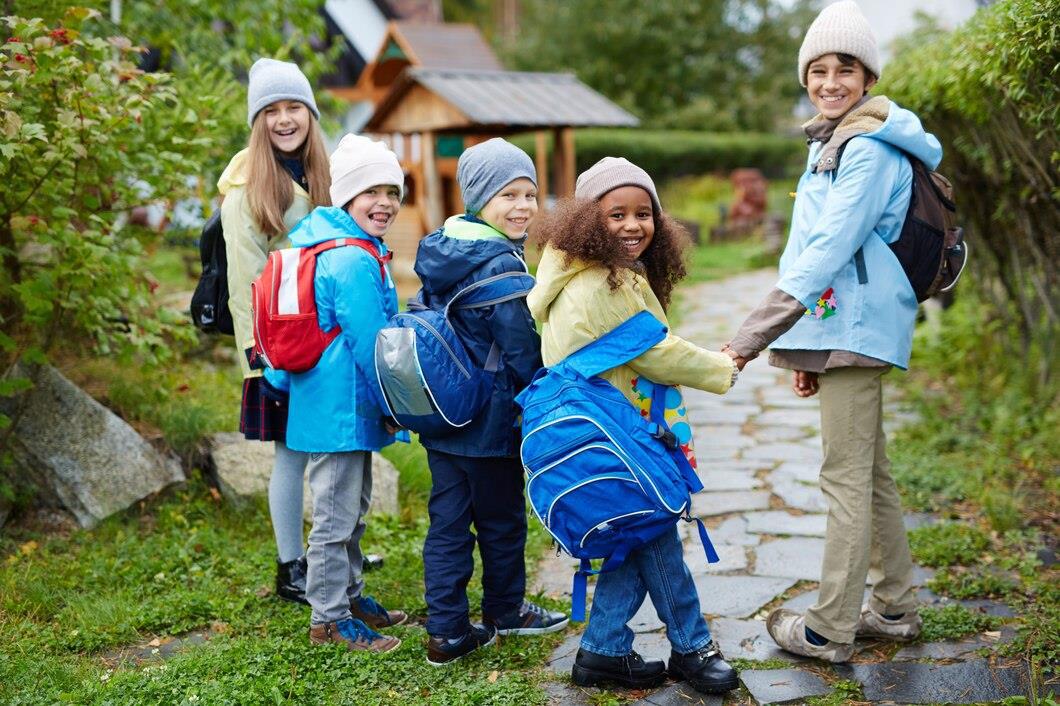 Additionally, spending time in nature has been shown to reduce stress and anxiety, improve mood, and increase feelings of happiness and well-being. When children feel calm and centered, they are better able to regulate their emotions and behavior, which is essential for success in school and in life.
Additionally, spending time in nature has been shown to reduce stress and anxiety, improve mood, and increase feelings of happiness and well-being. When children feel calm and centered, they are better able to regulate their emotions and behavior, which is essential for success in school and in life.
Outdoor Learning Activities for Preschoolers
Now that we’ve explored the benefits of outdoor education for preschoolers, let’s take a closer look at some specific outdoor learning activities for preschoolers that can help to promote these benefits.
Nature Walks and Hikes
One of the simplest and most effective outdoor learning activities is taking a nature walk or hike. Whether it’s a short walk around the school grounds or a longer hike in a nearby park or nature reserve, these activities provide children with the opportunity to observe and explore the natural world around them.
During a nature walk, children can collect leaves, sticks, and other natural materials to use in art projects or scientific investigations. They can also observe animals, plants, and other natural phenomena, which can help to build their knowledge and understanding of the natural world.
Gardening and Planting
Another great outdoor learning activity for preschoolers is gardening and planting. Whether it’s a small container garden or a larger plot of land, gardening provides children with the opportunity to learn about the life cycle of plants, the importance of soil and water, and the role of insects and other animals in the ecosystem.
Gardening also helps to develop fine motor skills, as children learn to handle small tools and delicate seedlings. Additionally, the act of nurturing and caring for plants can help to foster a sense of responsibility and empathy in young children.
Nature Based Activities for Preschoolers
Nature based activities for preschoolers can also include art projects that incorporate natural materials. For example, children can collect leaves, flowers, and other natural objects to create collages, sculptures, or other works of art.
These projects not only help to develop creativity and self-expression but also encourage children to observe and appreciate the beauty of the natural world. Moreover, working with natural materials can help to develop fine motor skills and hand-eye coordination.
Outdoor Storytelling and Imaginative Play
Outdoor education for preschoolers involves storytelling and imaginative play in natural settings. For example, children can create their own fairy tales or adventure stories inspired by the natural world around them.
Imaginative play can also help develop social skills, as children learn to collaborate and communicate with their friends. Moreover, the open-ended nature of outdoor play can help to foster creativity and problem-solving skills.
Nature-Based Science Experiments
Finally, outdoor learning can include nature-based science experiments and investigations. For example, children can explore the properties of water by creating small dams or waterways in a nearby stream or pond.
 They can also investigate the life cycle of insects by observing caterpillars and butterflies in a garden or natural area. These hands-on experiences help to build scientific knowledge and skills, such as observation, prediction, and experimentation.
They can also investigate the life cycle of insects by observing caterpillars and butterflies in a garden or natural area. These hands-on experiences help to build scientific knowledge and skills, such as observation, prediction, and experimentation.
Tips for Implementing Outdoor Education for Preschoolers
While the benefits of outdoor education for preschoolers are clear, implementing these programs can be challenging for childhood educators and parents. Here are some tips for incorporating outdoor learning into your curriculum or daily routine:
Start Small
If you’re new to this whole outdoor education thing, that’s okay! You don’t have to go all out right away. Start with small, easy things you can do every day. Maybe take a short walk around your school or spend a few minutes looking at the clouds or birds.
As you get more used to it, you can start doing outdoor activities more often and for longer times.
Keep Safety First
When you’re doing outdoor activities with preschoolers, safety is super important. Make sure the kids are wearing the right clothes for the weather. If it’s sunny, they might need sunscreen or hats.
Also, keep a close eye on the kids and make sure they know the rules for playing outside. This will help keep everyone safe and happy.
Use Nature Stuff
One of the best ways to get kids excited about outdoor education is to use things from nature. Tell them to collect leaves, sticks, and other cool things they find outside. They can use these for art projects or science experiments.
You can also make your outdoor play area more natural by adding things like logs, stumps, and rocks. This will give kids more fun things to play with and help them feel connected to nature.
Let Kids Explore
When you’re doing outdoor activities, it’s important to let kids explore and discover things on their own. Instead of telling them exactly what to do or making a bunch of rules, give them the freedom to check out their surroundings in their own way.
This will help them be curious and excited about learning. It will also help them feel more confident and proud of themselves.
Mix It with Other Things
Finally, try to mix outdoor education with other things the kids are learning. For example, if you’re on a nature walk, you can teach them about colors, shapes, or numbers. You can also use outdoor activities to help with language and reading skills. Maybe read books about nature or tell stories outside.
The Future of Outdoor Education for Preschoolers
Outdoor learning activities help little ones grow strong, think smarter, and play well with friends. Grown-ups should make sure to include outdoor learning in their day. This can be things like:
- Nature walks
- Planting gardens
- Playing pretend outside
These fun activities help kids learn and feel a special connection to the outdoors. By doing this, we’re helping kids become curious, confident, and love the world around them.
Conclusion
Outdoor education for preschoolers is an essential component of early childhood education that offers numerous benefits for children’s development. Outdoor activities boost health, thinking, and social skills. It’s up to us to make these activities a big part of their lives. Basically, there are many ways to add learning activities to everyday life. This helps kids connect with nature and grow in many ways.
By doing so, we can create a generation of children who are curious, confident, and deeply connected to the world around them. And in a world that is increasingly disconnected from nature, that may be the most important lesson of all.
Best Daycare Near You
Looking for more than just daycare? Welcome to Launchpad Early Education! We’re not just about looking after your child. We’re all about helping them grow into great people. Our place is fun and safe, and we teach important stuff like being kind and smart. We’re here to get your child ready for the future. Come join us at Launch Pad Early Education!
FAQs
Why is it important to build experience outside of the classroom?
Building experience outside the classroom is crucial for applying theory to real life. It helps develop critical thinking and problem-solving skills. Students learn to adapt and interact with the world meaningfully. These experiences also boost confidence and teamwork skills, sparking interest in lifelong learning.
What is learning in the outdoor classroom?
Outdoor classroom learning takes place in nature or community settings. It focuses on hands-on, interactive teaching. Subjects like science and art come alive outside. This approach promotes curiosity and environmental connection, offering a fresh perspective.
What are the goals for outdoor learning?
Outdoor learning aims to connect students with nature and improve their physical health. It builds life skills such as teamwork and resilience. The goal is also to teach environmental care and prepare students for future challenges with innovative thinking.
How do you promote outdoor learning?
To promote outdoor learning, integrate it into various subjects. Use local outdoor spaces for classes. Work with environmental groups for diverse experiences. Train teachers in outdoor teaching methods. Share outdoor learning benefits with the community for support.
What benefits do students gain from outdoor learning?
Students gain many benefits from outdoor learning, including better health from being active outdoors. They also develop a stronger connection to the environment, which can enhance their understanding of ecology and conservation. Outdoor learning improves social skills by encouraging teamwork and communication in different settings. Additionally, it helps students retain information better by linking lessons to real-world experiences.
How can outdoor learning be assessed?
Assessing outdoor learning can involve observation and reflection, focusing on students’ engagement, participation, and ability to apply what they’ve learned in practical situations. Teachers can use project-based assignments, student portfolios, and group presentations to evaluate learning outcomes. Feedback from students about their experiences and learnings can also provide valuable insights for assessment. This approach ensures that assessment is comprehensive and aligned with the objectives of outdoor learning.


